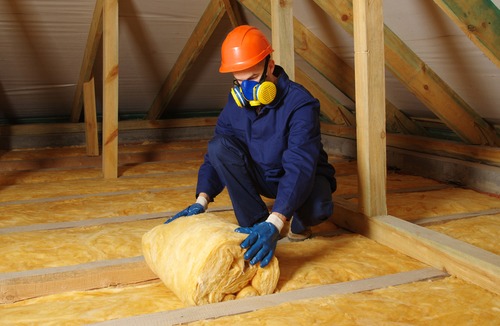ACEEE report details importance of retrofits to reduce home energy use

A new report by the American Council for an Energy-Efficient Economy (ACEEE) detailed the importance of energy efficient retrofits for homes and why federal support is necessary to spur affordable retrofits that save on energy use and reduce emissions.
Energy retrofits involve upgrading the homes with thick insulation, thorough air sealing, efficient heat pumps, and other measures. They also include actions like switching to LED lights, buying insulated shades, replacing furnaces, windows, and the roof. Taking these steps can reduce energy use by 58 to 79 percent, thus drastically reducing carbon emissions and lowering utility bills. However, such retrofits are pricey, potentially costing in the range of $42,600 to $56,750, according to the report.
“Simple steps deliver great bang for the buck, but if we’re serious about climate action, we need to do a lot more and make deep retrofits affordable and accessible to millions of homes,” Jennifer Amann, the report’s lead author and a senior fellow in ACEEE’s buildings program, said. “The government needs to help scale these retrofits by subsidizing them, training contractors, and encouraging electrification.”
The report found that completing retrofits in stages is an effective strategy for achieving energy and carbon savings. For example, for an older home in a cold or marine climate, a stage approach that starts with new windows and insulation is a good place to start. For newer homes in warmer climates, new HVAC equipment and attic insulation might incorporate a first stage. In general, high-efficiency heat pumps and heat pump water heaters present the best opportunity for electrification when heating loads are smaller. Also, less expensive measures, such as storm windows or insulated shades, ceiling fans, and high efficiency dehumidifiers, can quickly reduce energy use and emissions.
“Consumers can benefit by taking any of these approaches,” Amann said. “If they have an old and dying HVAC system, switching to an efficient electric heat pump along with air sealing and attic insulation may be good first steps. Rather than doing everything in the perfect order, it’s more important that they get started and do something.”
Retrofits are needed to meet U.S. and global climate goals. A 2021 International Energy Agency report found that existing residential buildings need to be retrofitted at the rate of 2.5 percent each year to reach the goal of net-zero emissions by 2050.
However, the report states that there are several barriers including a lack of standardized insulation packages; a limited range of heat pump products that deliver high-efficiency at lower cost; and the limited use of passive technologies that decrease building loads. Plus, most contractors are not yet ready to undertake a deep retrofit’s complexity and most homeowners are not ready for its costs.
The report recommends that energy efficiency programs standardize retrofit packages, split upgrades into two or more phases, include electrification, and offer both financing and incentives.
